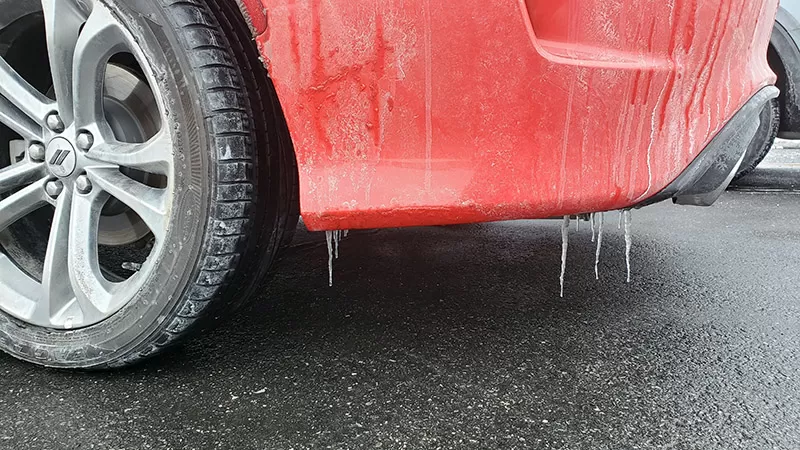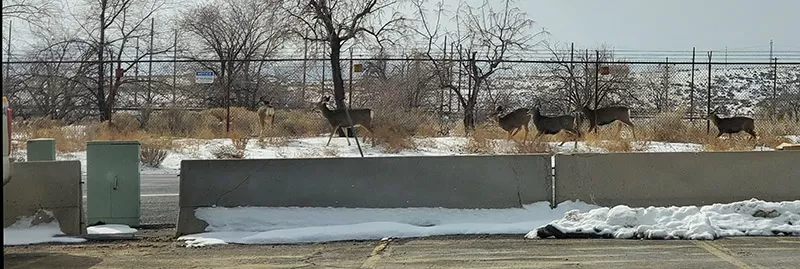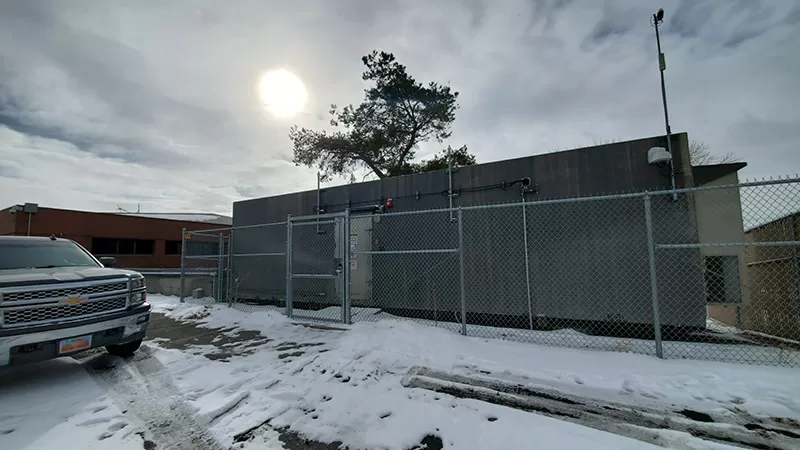Check out our White Paper Series!
A complete library of helpful advice and survival guides for every aspect of system monitoring and control.
1-800-693-0351
Have a specific question? Ask our team of expert engineers and get a specific answer!
Sign up for the next DPS Factory Training!

Whether you're new to our equipment or you've used it for years, DPS factory training is the best way to get more from your monitoring.
Reserve Your Seat Today
I just got back from a fantastic installation trip in the mountainous west of the US. I had the following appointments with DPS clients:
When I met with the engineer at the mining company, I encountered a holistic approach to safety that I haven't seen before anywhere else. I suppose this makes sense, since there hardly a place with more potential hazards than a mining operation.

Even COVID protocols, which exist on a broad spectrum in 2022 between and within various regions, were relatively intense. We wore masks, as mandated. We had our temperatures checked, which was common in 2020 but is not practiced nearly as much now. We were not required to have a negative viral test result, but our colleagues last summer did (prior to vaccines being more commonplace).
The most interesting part of this "safety first" culture is literal at the beginning of any meeting (of 3 or more people). It was so unexpected that I didn't really understand what was happening when my client asked me, "We always start meetings here with a safety briefing, so is there anything you want to share about safety?".
I misread the intent here, asking "Oh, are we about to leave this office and enter the mine?". Getting a funny (masked) look in response, I explained that I wasn't really sure what he was after. He took the lead and explained the most relevant safety tip that came to mind:
"You guys come from a climate (the Central Valley of California) where it doesn't really snow on the roads. So, a good safety note is to just keep your speed down. Don't be in a rush to get anywhere. Give yourself extra stopping distance and take corners slowly."

Instantly, it clicked. This mining organization has put a massive cultural emphasis on safety. It's so intense as to be initially confusing for an outsider like me.
After the visit, driving back to our hotel, I thought more about this. It made me think in more detail about the safety aspects of good remote monitoring equipment that I always try to design and deliver perfectly.
Let's review some of the ways that remote monitoring improves safety and protects human life, starting with...
Your operation exists for a reason. For the typical industries served by DPS, this includes essential and fundamental services:
As you can see, massively important lifesaving operations can be jeopardized without good monitoring.
Imagine the massive failure of allowing suffering & death because of something simple:
Although you probably won't be the one to do it directly (government fines and forced CEO retirements are more common), imagine explaining to the families of a victim that your oversight led to a life cut short.

With the number of clients we work with at DPS, it's inevitable that we occasionally hear about tragic events. One in particular sticks out in my mind:
We heard from one DPS client with snowy mountaintop sites that require helicopter trips for maintenance. One technician was dropped off to do a few hours of work while the helicopter proceeded to other sites.
After the work was complete, the technician waited for pickup. He waited and waited. Eventually, another helicopter arrived, delivering the sad news that the first helicopter had crashed, killing all aboard.
Could remote monitoring have prevented this tragedy? Not necessarily. Some site visits are actually required for installation or maintenance work.
Instead, what this story demonstrates is the inherent value in minimizing site visits whenever possible. Some trips (like checking up on an unexplained alarm, or toggling a manual switch) can be avoided with good monitoring & automation, and they absolutely should be.
Effective remote site monitoring is too important, and too amazingly inexpensive, to ignore. Allow me to demonstrate.
I once read a fascinating article about how governments impossibly put a dollar figure on a human life. The concept of "priceless" lives is tossed around a lot, and it's true, but it doesn't help us when it comes to making real-world spending decisions.
Imagine that a rational government (Yes, a big imagination may be required...) wants to save as many people as possible, as efficiently as possible. It would decide what safety regulations to institute and what expenditures are worthwhile.
You can do this sort of thing by ranking every possible expenditure by a "lives saved per dollar" ratio (perhaps putting extra weight on saving children, etc.). You'd then authorize spending for each program in that order.
But where do you stop? There's no end to actions that could save at least one life, even though they might be massively expensive. At what point should dollars transition from keeping people alive to enhancing their lives? Where on the efficiency curve do we instead start spending on education, entertainment, a space program, or anything else?
The article I read had a fascinating answer: "For decision-making purposes, the government values a human life at roughly $7 million."
This can be upsetting to hear. What madman came up with this figure? Actually, the answer is quite elegant: The citizens decided.
As individuals, we have to make safety-related decisions every day. What medical care do we pursue? How much extra do we spend on cars with not-yet-mandated advanced safety features? How much do we spend on bicycle helmets?
If you average out the life-saving expenditures that the average person will and will not purchase, you can arrive at a dollar figure like $7 million.

A typical, high-quality RTU that you might install at a remote location is generally about $1000-$5000 (USD), depending on the size and scope of the site.
A master station (one for your entire network) might range from $7000 to $70,000 or so, again depending on options and capacity requirements.
As you can see, we're talking about a typical overall cost of perhaps "a few thousand dollars" per site, not millions and millions. If you choose a manufacturer with good tech support, the time you spend installing and maintaining can be minimized to further reduce your expenses.
Think about preventing a single needless outage. Even if it's just down for a few hours, multiply that by your typical incident rate.
As an example, I've worked with a small-to-medium county government that handles about 175,000 incoming 911 calls per year. For that organization, three hours of downtime would be about 60 missed calls. It's hard to imagine that some monitoring gear that prevents that type of public safety communications failure can't achieve full ROI within a year or two.
Let's go back to the beginning and the question that confused me during my client visit: "What does safety mean to you?"
It's my hope that this article gave you some context to think about the real human benefit of a boring old technology like remote site monitoring gear. I'd love it if you called me to share your thoughts on safety. It might just inspire another of my future blog posts.
If you're prepared to talk about your specific remote monitoring needs, that's another great reason to speak with me. Even if you don't know everything about monitoring, I'll walk you through the fundamentals. Whether you need something off-the-shelf or highly customized, I can make that happen for you.
Give me a call at 559-454-1600. You can also email me at sales@dpstele.com

Andrew Erickson
Andrew Erickson is an Application Engineer at DPS Telecom, a manufacturer of semi-custom remote alarm monitoring systems based in Fresno, California. Andrew brings more than 18 years of experience building site monitoring solutions, developing intuitive user interfaces and documentation, and opt...